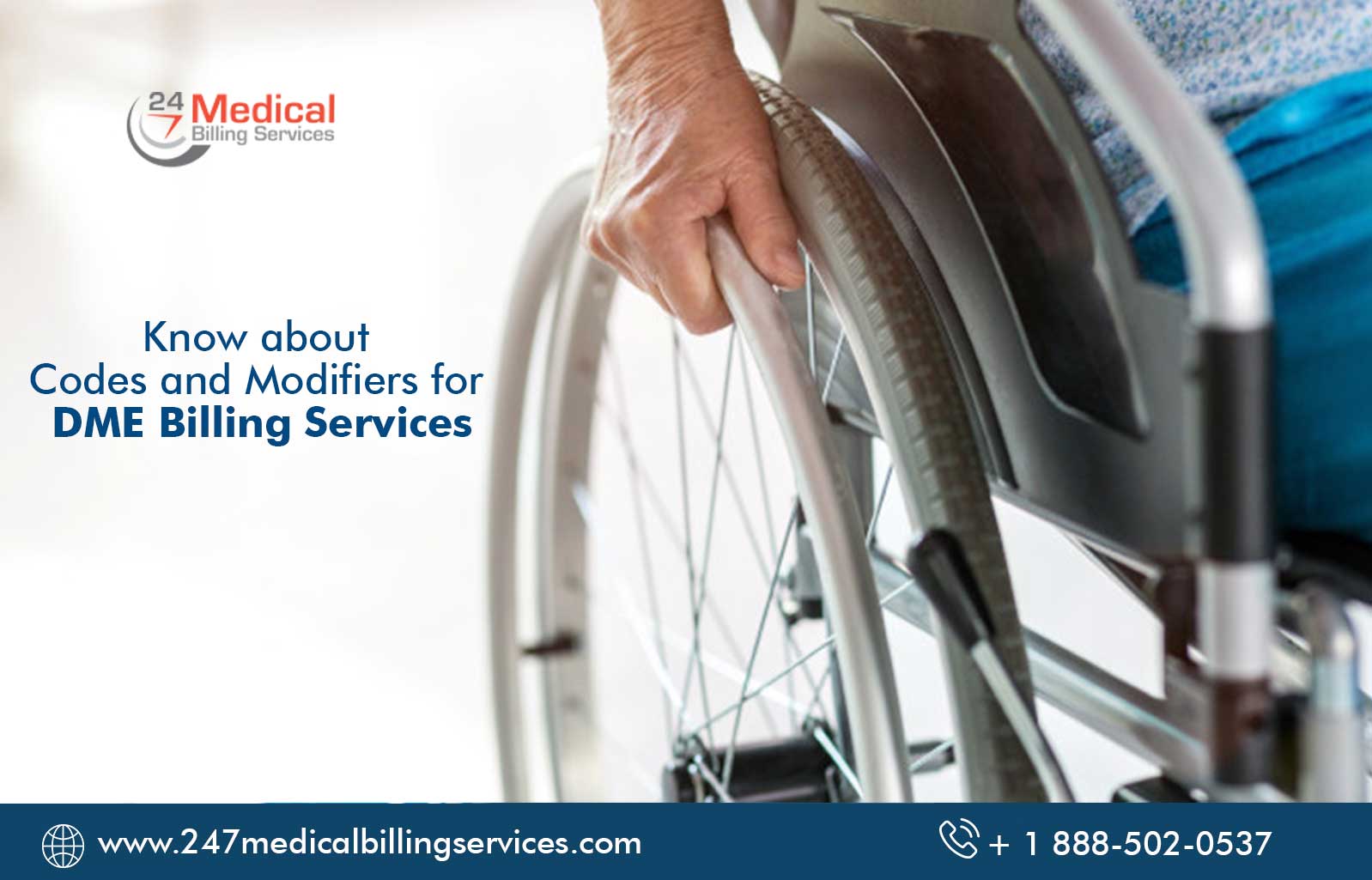
Know about Codes and Modifiers for DME Billing Services
Have you ever realized the medical need for the DME Durable Equipment items? How relevant are the modifiers, especially when one thinks of DME medical coding? Not very difficult to answer, but very crucial to take notice of. Though not all the codes require modifiers, some can’t take the DME medical billing process further without them. DME medical billing and coding are quite different from the other coding procedures since they also involve Durable Medical Equipment patients. In fact, the entire medical billing and coding process depends on the DME details.
Let’s have a look and learn about the most commonly used HCPCS E codes and modifiers in the DME Medical Coding:
HCPCS E Codes used in DME Coding
Before considering an item as a DME, it is essential that it must meet specific criteria, and these are as follows:
- The equipment must be capable enough to be used repeatedly.
- The DME must be used only to serve a medical purpose.
- It is generally not counted for a patient that does not have any illness or injury.
- It must be appropriate for home-usage.
The most commonly used E codes under the DME jurisdiction are as follows:
E0100 – E0105: Canes of all materials with Tips.
E0110 – E0118: Crutches.
E0130 – E0159: Walking Aids & Attachments.
E0160 – E0162: Sitz Type Bath or Equipment.
E0163 – E0175: Commode Chair & Supplies.
E0181 – E0199: Pads, Pressure Mattresses, & Supplies.
Most Crucial & Commonly used DME Modifiers in DME Coding:
Here are some of the critical factors about the modifiers that you must be aware of:
- Make sure that there is a medical necessity for a DME Durable Equipment item for the patient.
- Don’t forget to document this necessity appropriately.
- Ensure to collect the delivery receipt from the patient once they receive the DME item.
- Ensure to report the correct DME item with the right place of service.
- Double-Check with the insurance provider about how they want you to report the DME items while submitting the claims.
Important Modifiers used for DME medical billing and coding are:
RR – RENTAL: When a DME is rented, don't forget to use the 'R' modifier for the claim. This specific modifier is used for the rented DME items and for the equipment that falls in the following categories:
- Inexpensive or other Routinely Purchased DME (IRP) items.
- Frequent or Substantial Servicing (FS) DME.
- Other customized items as:
- Capped Rental Items (CR).
- Oxygen and Oxygen Equipment.
- Other Prosthetic and Orthotic Devices (P & O).
KH – DMEPOS item, purchase, initial claim, or first-month rental:
For a capped DME rental, this is the modifier to be used. With the KH modifier, you can indicate that you are billing for the rental of the first month of a limited rental period.
KJ – DMEPOS item, Capped or Parenteral Enteral Nutrition (PEN) Pump - Rental, four to fifteen-month:
This is the modifier to be used for the capped rental DME items. This modifier indicates the billing period from four to thirteen/ fifteen days.
KI – DMEPOS item, second or third-month rental:
This is also used for the capped rental DME equipment. The KI Modifier is used for billing the second and the third month of the rental period.
Other Dressing A1-A9 Codes:
A8 – Dressing for eight wounds:
This code is for surgical dressings that are billed without the modifiers. The A1-A9 codes are not covered under the surgical dressing benefits. However, certain dressing codes are covered under other services.
A5 – Dressing for five wounds:
Like the above codes, this code is for the surgical dressing billed without the modifiers. The A1-A9 codes are not covered within surgical dressing benefits.
A4 – Dressing for four wounds:
This code is for surgical dressings that are billed without the modifiers. The A1-A9 codes are not covered under the surgical dressing benefits. However, specific dressing codes are covered under other services.
A9 – Dressing for nine or more wounds:
This code is for surgical dressings that are billed without the modifiers. The A1-A9 codes are not covered under the surgical dressing benefits.
A1 – Dressing for one wound:
This code is for surgical dressings that are billed without the modifiers. The A1-A9 codes are not covered under the surgical dressing benefits. However, certain dressing codes are covered under other services.
A7 – Dressing for seven wounds:
This code is for surgical dressings that are billed without the modifiers. The A1-A9 codes are not covered under the surgical dressing benefits.
A6 – Dressing for six wounds:
This code is for surgical dressings that are billed without the modifiers. The A1-A9 codes are not covered under the surgical dressing benefits. However, certain dressing codes are covered under other services.
A3 – Dressing for three wounds:
Surgical dressing codes billed without modifiers A1-A9 are non-covered under the Surgical Dressings benefits. Certain dressings might be covered under other benefits.
A2 – Dressing for two wounds:
This code is for surgical dressings that are billed without the modifiers. The A1-A9 codes are not covered under the surgical dressing benefits. However, certain dressing codes are covered under other services.
Conclusion
There are several other modifiers used for different DME medical billing and coding. Do you think it is easy to remember them all while focusing on quality patient services? Obviously, it’s not. That’s why it is recommended to outsource DME billing and coding services to 24/7 Medical Billing Services to minimize the denial rates and enhance the reimbursement amount.
Read More : Billing & Coding Guidelines For DME Billing Services In 2022

.png)